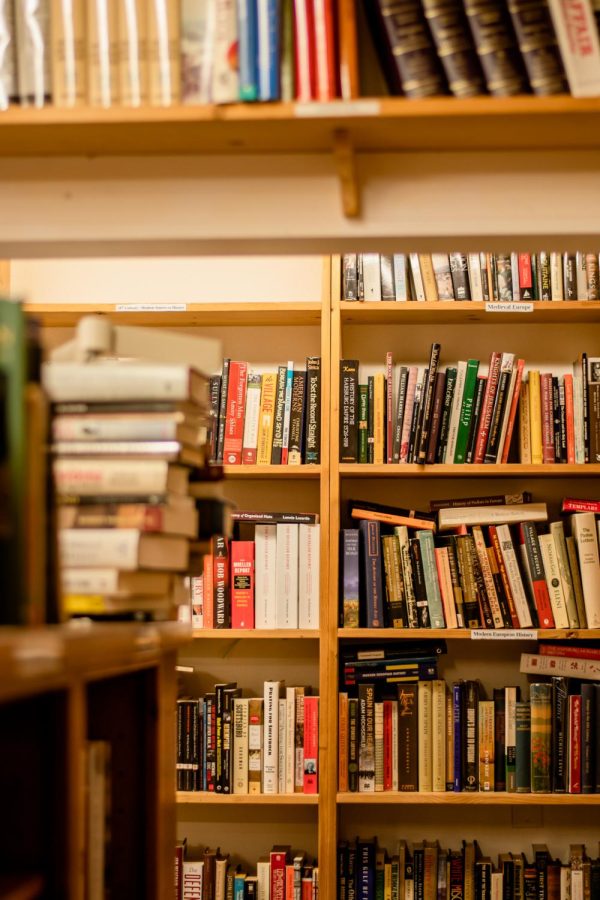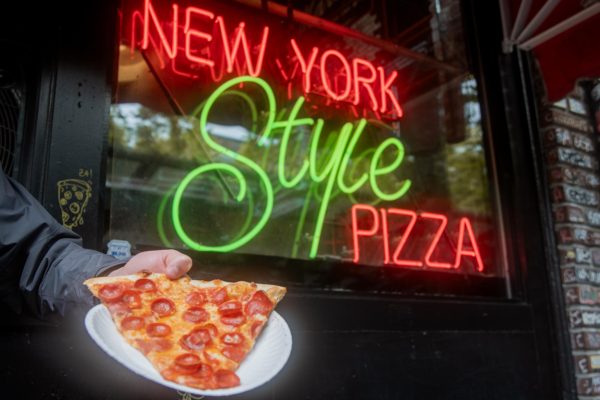From Bookstores to Libraries, Reading the Post-Quarantine Environment
Bookshelves filled with books at Twice Sold Tales.
The pandemic never quite ended, but books have acted as a time-killer for months since quarantine opened up opportunities to pick up new hobbies. The New York Times reported that the sales of physical books rose by 8.2%, and audiobooks sales rose almost double at 16.5%. The community surrounding books is now in a post-quarantine state, and is finding ways to adapt similarly to how it adapted at the beginning of the pandemic.
Lauren Louie, a second-year business analytics major who runs a young adult book blog and worked for Barnes and Noble, noticed the rise in support for bookstores during the pandemic, and attributed some of the change to booktok, a particular community on TikTok.
“I feel like booktok was a really big reason why people are supporting bookstores now,” Louie said. “I’m going back to Barnes and Noble in a couple weeks when I go back home. I’m in this group chat [Barnes and Noble related] and all these people are talking about how they have certain books that are flying off the shelves. I don’t think many people realize how big of an impact social media has on stores in general.”
Books becoming popular due to social media is something retailers have noticed as well. When a book goes viral on TikTok, sales for the book significantly increase. Barnes and Noble even has a webpage and section in stores for the most popular booktok books.
Despite the growing social media interest in books over the pandemic, independent bookstores have had struggles of their own. Unlike bars and restaurants, which immediately faced staffing shortages once vaccines against COVID-19 became available, bookstores seem to have had less of an immediate patronage.
In a written statement to The Spectator, Jessica Hurst, the current owner of Mercer Street Books, explained that business took a bit of time to pick back up.
“There wasn’t an immediate change after the vaccines became available. People have slowly re-emerged into the world based on their own comfort and risk levels,” Hurst said.
Despite this, Hurst recognized that restaurants’ reopening benefited Mercer Street Books as well.
“The most significant change came when other entertainment venues and restaurants were able to open again. That seemed to allow more people to relax into the idea of going out for pleasure, including to a local bookstore. It’s been wonderful to see some of my favorite regulars’ faces again,” Hurst said.
Public services that grant access to books like libraries also made many changes during the pandemic. The Lemieux Library at Seattle University was no exception, providing students with sought-after books, ebooks, remote services and borrowed technology for online learning.
Chris Granatino, the director of research services at the Lemieux Library, explained that during the pandemic, the library put a significant amount of effort into improving their online collections.
“We really tried to identify the critical materials that we knew a lot of students would be using and a lot of faculty would be relying on. In the past, they might have had a course-reserve copy. We tried to make sure that we were purchasing ebooks to replace those,” Granatino said.
Physical needs of the library changed along with the digital needs. Doug Eriksen, the director of library systems, now sees small groups taking online classes together in group study rooms.
“We expanded the installation of webcam-capable computers all throughout the library, which was never part of our computer labs before, so that a bunch of new library spaces are accessible for students who are participating in online class,” Erikson said.
Physical spaces and digital needs will surely keep changing for bookstores, libraries and everything in between. Finding a way to support those much-loved Seattle resources and businesses will be critical to maintaining a civic atmosphere in the Emerald City.










